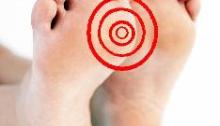Diabetes can knock your feet
With over one-third of North Americans suffering from diabetes, everybody on the continent is affected. Diabetes is a universal disease that can afflict anyone, regardless of one’s age, weight, gender or race. And the number of diabetes is on the rise. Despite this, most people are still unaware of just how widespread diabetes is, and…









